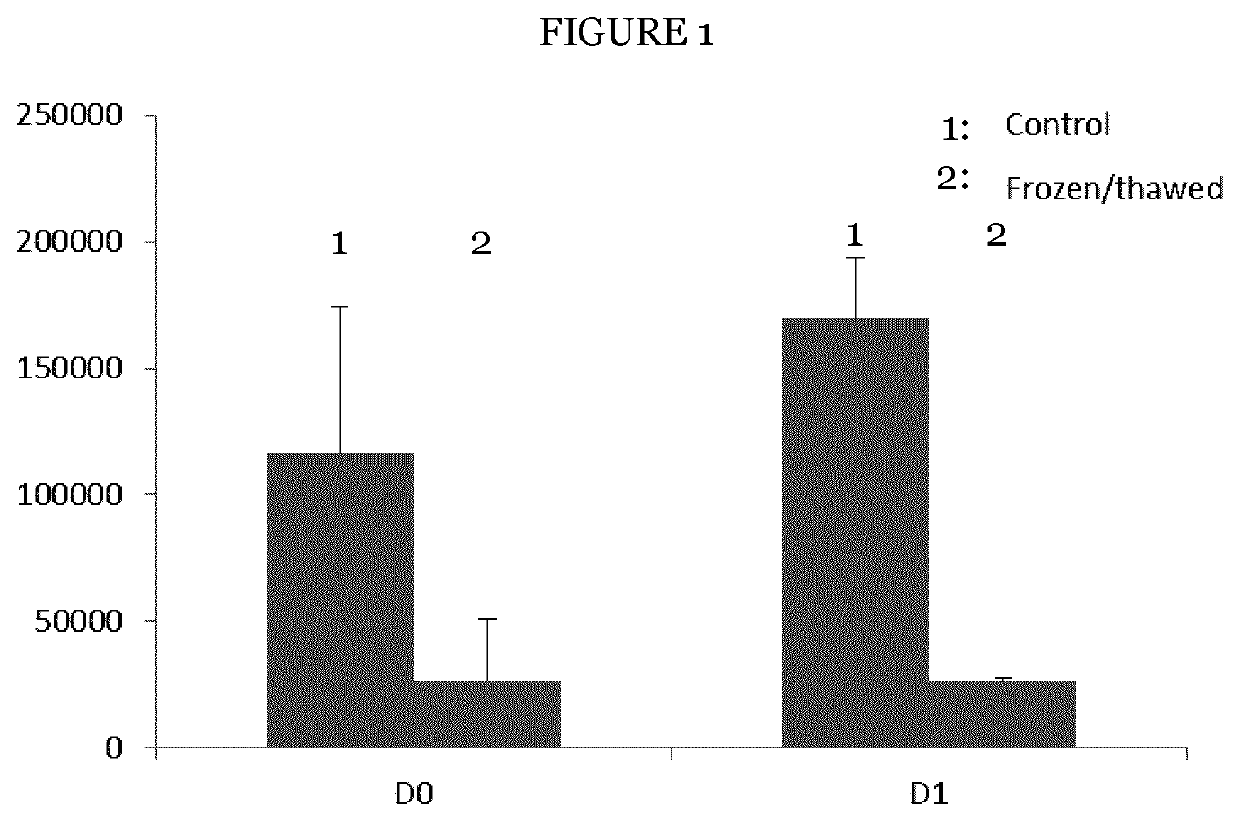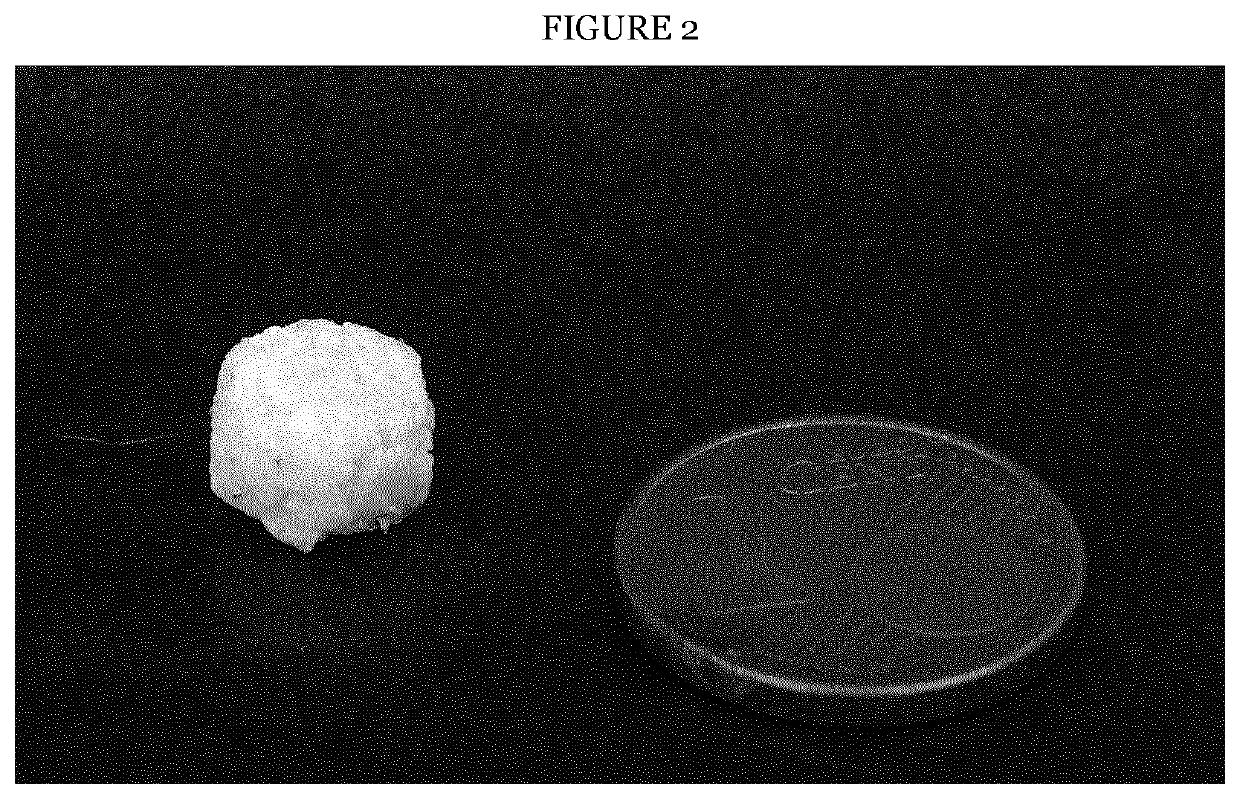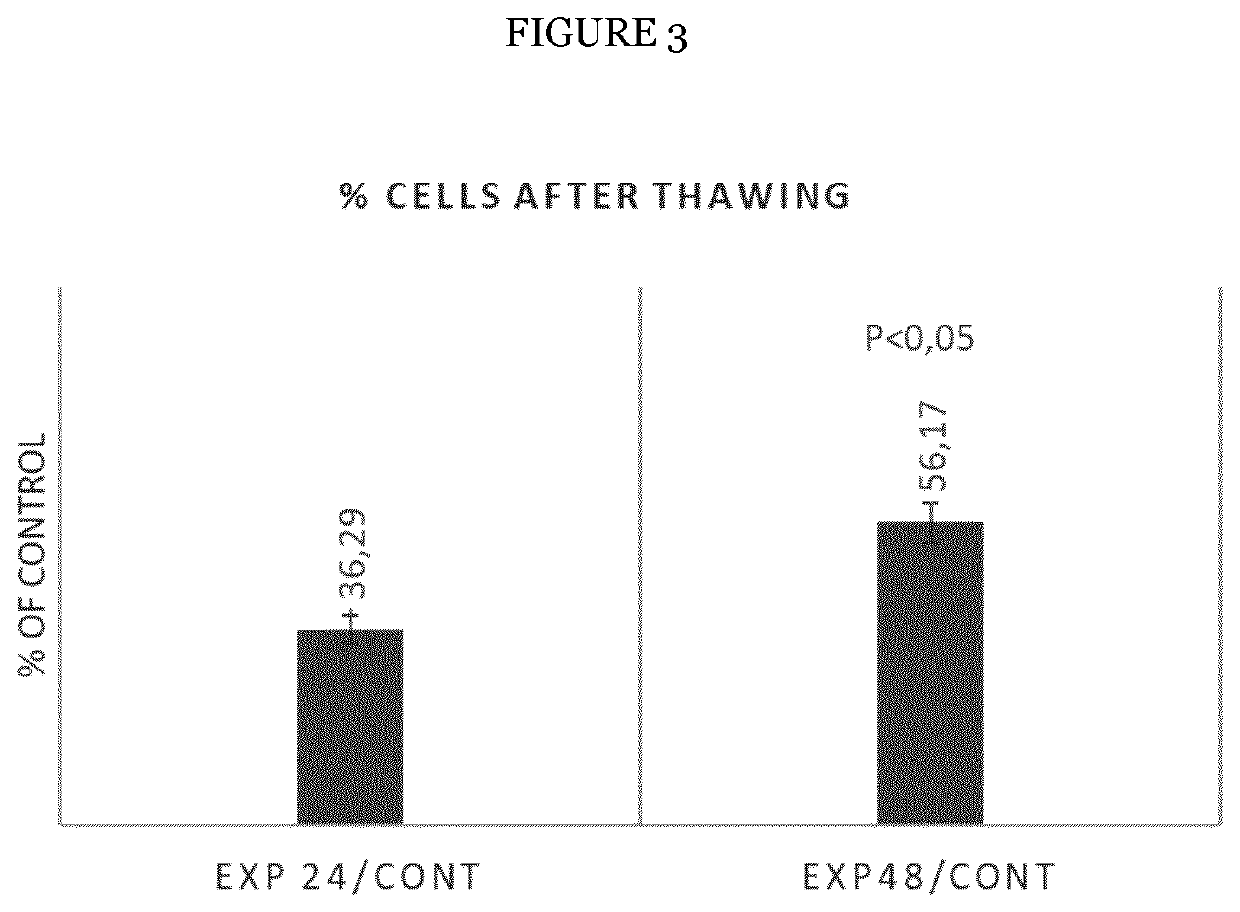Mesenchymal stromal cell bone graft material
a technology bone grafts, which is applied in the field of mesenchymal stromal cells, can solve the problems of limiting the use of msc in the treatment of bone disorders, and often problematic approaches
- Summary
- Abstract
- Description
- Claims
- Application Information
AI Technical Summary
Benefits of technology
Problems solved by technology
Method used
Image
Examples
example 1
Materials
[0077]Dimensions and shape: Cylindrical, height 3-5 mm, diameter of 5-8 mm, depending on the size of the bone defect. A number of scaffolds can be combined to fill larger defects as they occur in the treatment of femoral head osteonecrosis.
[0078]The scaffold should consist of natural or synthetic matrices e.g. α-TCP, β-TCP, demineralized bone matrix, polylactic acid or polycaprolactone.
[0079]The scaffold should preferably be mechanically stable in order to prevent collapsing during surgical procedures and implantation. The scaffold should offer communicating macropores of the size range 100 μm to 500 μm. Pore sizes from 100 μm improve angiogenesis, while pore diameters of 300-400 μm have a positive effect on osteoconductivity. Micropores enabling surface enlargement, cellular adhesion and improvement of nutritional support should range from 1 μm to 10 μm. Overall porosity of the scaffold should be 60-70%, thus ensuring highest possible degree of porosity without compromisin...
example 2
re of a Bone Implant Graft
[0081]MSC derived from the cell bank of comparative example 2 were seeded to the scaffolds as described in Henrich et al, 2009, 2013, 2014; Seebach et al 2010, 2012, 2015. In brief, cells were harvested and preferably adjusted to a density of 1*106 cells / mL (Range 1-1*107 cells / mL). The cell suspension is carefully dripped on an equal volume of scaffold.
[0082]Non adsorbed cell suspension is carefully distributed once again evenly on the scaffold followed by 10 min incubation at 37° C., 5% CO2, 100% humidity. This procedure (Wetting of scaffold with non-adsorbed cell suspension followed by incubation) will be repeated two more times.
[0083]Such obtained functionalized graft material is ready for use or can be cryopreserved.
example 3
rvation of Bone Graft Implants
[0084]Cryopreservation will be performed preferably immediately after the seeding procedure but time span between seeding and cryopreservation may vary in a cell type dependent manner from 0 min to 24 hrs. In the latter case the scaffold will be stored in medium (DMEM+5% platelet lysate) at 37° C., 5% CO2, 100% humidity until cryopreservation procedure takes place.
[0085]The cell populated scaffolds were subjected to cryopreservation medium preferably consisting of physiologic NaCl solution (65% v / v, final NaCl concentration 0.7%), human serum albumin solution (HSA, 25% v / v, final HSA concentration 5%) and DMSO (10% v / v).
[0086]The cryopreservation medium is provided in sterile plastic bags. After addition of cell seeded scaffolds (range 1 to 20 scaffolds per bag), the bags are closed by heat sealing. The sealed bags were immediately subjected to a controlled rate freezer. Long term storage will be performed in liquid nitrogen vapor phase. The possibility...
PUM
| Property | Measurement | Unit |
|---|---|---|
| diameter | aaaaa | aaaaa |
| diameter | aaaaa | aaaaa |
| diameter | aaaaa | aaaaa |
Abstract
Description
Claims
Application Information
 Login to View More
Login to View More - R&D
- Intellectual Property
- Life Sciences
- Materials
- Tech Scout
- Unparalleled Data Quality
- Higher Quality Content
- 60% Fewer Hallucinations
Browse by: Latest US Patents, China's latest patents, Technical Efficacy Thesaurus, Application Domain, Technology Topic, Popular Technical Reports.
© 2025 PatSnap. All rights reserved.Legal|Privacy policy|Modern Slavery Act Transparency Statement|Sitemap|About US| Contact US: help@patsnap.com



